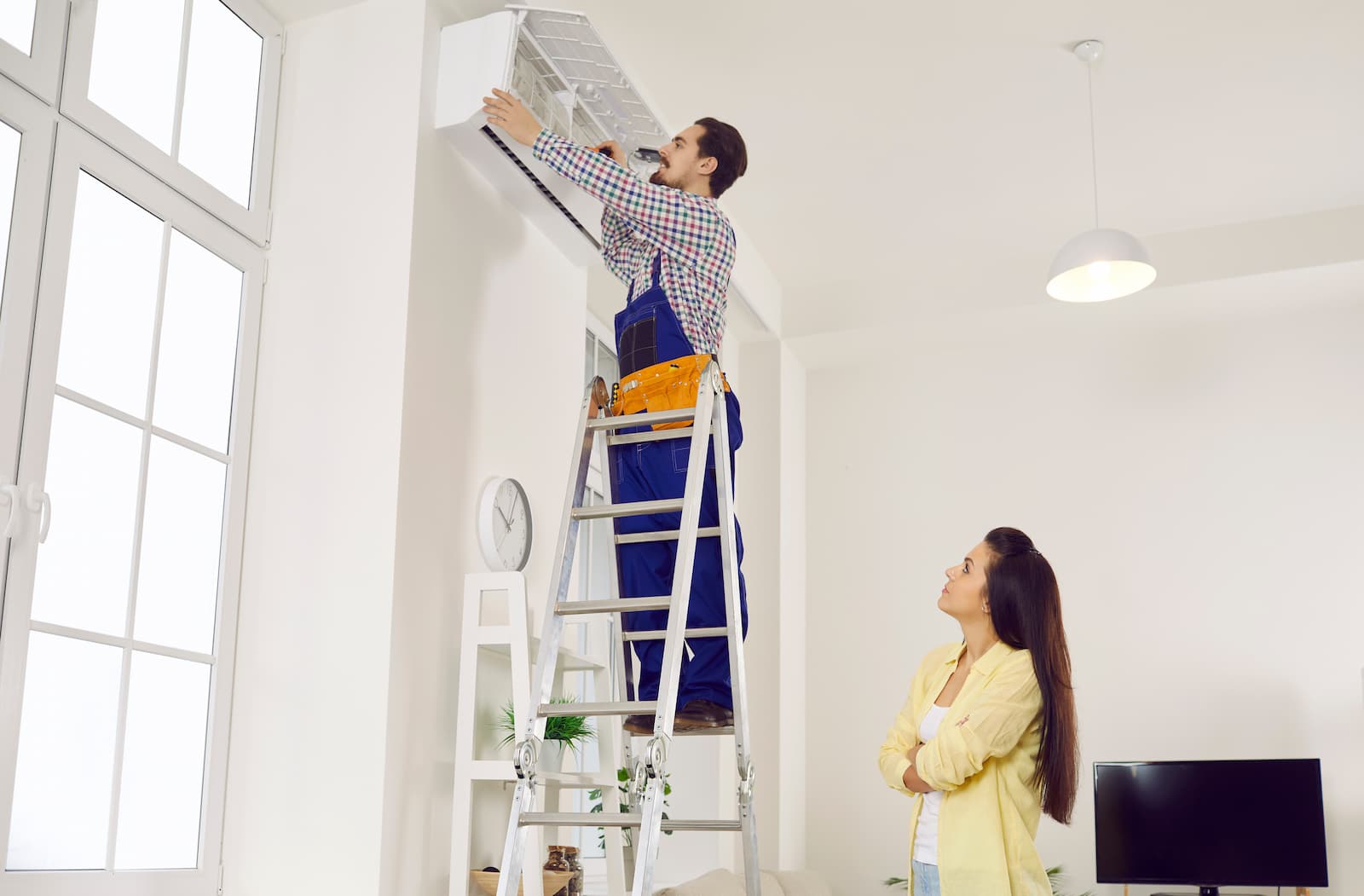Installing a new air conditioning system is a significant upgrade for any home or business, ensuring comfort during the hottest months of the year. Whether you’re replacing an old unit or installing AC for the first time, understanding the process will help you feel prepared and confident. Here’s a step-by-step guide on what to expect during your air conditioning installation, from initial preparations to final testing.
1. Pre-Installation Assessment and Planning
Before installation day, a professional HVAC technician will typically perform a pre-installation assessment of your home or business. This includes:
- Load Calculation: The technician will calculate the right size and capacity for your air conditioning system based on the square footage of your space, insulation levels, number of windows, and climate zone. This step ensures you get an efficient system that meets your cooling needs without overworking or underperforming.
- Ductwork Inspection: If you already have ductwork, it will be inspected for leaks, damage, or areas that need improvement. If you’re installing a ductless system, this step is skipped.
- Choosing the Right AC Unit: You’ll discuss options for your air conditioning system, considering factors such as energy efficiency (SEER rating), budget, and specific features like smart thermostats or zoning capabilities.
- Scheduling the Installation: Once all details are finalized, your installation appointment is set. Be sure to choose a time when you can be present for the installation.
2. The Installation Process
On the day of installation, your HVAC team will arrive with all the necessary equipment and tools. The installation process generally follows these steps:
- Preparation: The technicians will begin by preparing the area. This may involve removing old equipment, protecting your floors and walls, and setting up workspaces both indoors and outdoors. If you’re upgrading from an older system, the existing unit will be safely disconnected and removed.
- Installing the New Air Conditioner: The process varies slightly depending on the type of air conditioning system (central air, ductless mini-split, etc.). In a typical central air system installation, the technicians will place the outdoor unit (condenser) on a stable, level surface. Then, they’ll connect it to the indoor unit (evaporator coil) and link them through refrigerant lines and electrical wiring.
- Ductwork Adjustments: If you’re installing central air, technicians will inspect and make necessary adjustments to your ductwork, sealing any leaks or adding new sections if required to optimize airflow.
- Thermostat Installation: Most AC installations include upgrading or installing a thermostat. Modern systems often come with programmable or smart thermostats, allowing for more precise temperature control and energy savings.
3. System Testing and Inspection
Once the air conditioning system is installed, the HVAC team will thoroughly test the unit to ensure everything is working properly:
- Initial Run: The system will be powered up for the first time, and the technicians will check that cool air is being distributed evenly throughout your space.
- Airflow Check: The technicians will measure the airflow from each vent to confirm that air is circulating properly and that there are no blockages in the ducts or refrigerant lines.
- Refrigerant Levels: The correct refrigerant levels are essential for efficient cooling. The technicians will check the system’s refrigerant levels and make adjustments if needed.
- Thermostat Calibration: If a new thermostat is installed, the technician will calibrate it, ensuring it correctly communicates with the AC system and maintains your desired temperature.
4. Post-Installation Walkthrough and Guidance
After testing, your HVAC team will walk you through the key features of your new air conditioning system. They’ll explain how to use the thermostat, discuss recommended maintenance practices, and answer any questions you have. This is a great time to clarify anything about the system’s operation or warranties.
Some key topics they’ll cover include:
- How to Adjust Settings: Understanding how to control your AC system, whether it’s a smart thermostat or a basic model, is crucial for optimizing energy efficiency.
- Maintenance Tips: Routine maintenance helps extend the lifespan of your AC. Technicians may recommend regular tasks such as changing the air filters, scheduling annual tune-ups, and checking for airflow obstructions.
- Warranty Information: Your AC system will likely come with a warranty covering parts and, in some cases, labor. The HVAC team will explain the terms and ensure you understand what’s covered and how to make a claim if necessary.
5. Final Cleanup and Departure
Once everything is installed and tested, the HVAC team will clean up any debris from the installation process. They’ll remove old equipment, packaging materials, and ensure your home is left in the same condition as when they arrived. Before leaving, they will make sure you’re fully satisfied with the installation and confident in how to use your new air conditioning system.
Conclusion
Installing a new air conditioning system is a straightforward process when handled by professionals. From the initial assessment to the final walkthrough, your HVAC team will guide you through each step, ensuring that your system is installed correctly and operates efficiently. If you’re ready to upgrade or install a new air conditioning system, Ellis Refrigeration provides expert installation services across Dorset, as well as Hampshire, Somerset, and Wiltshire. Call us at 03330910328 to schedule a consultation and enjoy year-round comfort in your home or business
